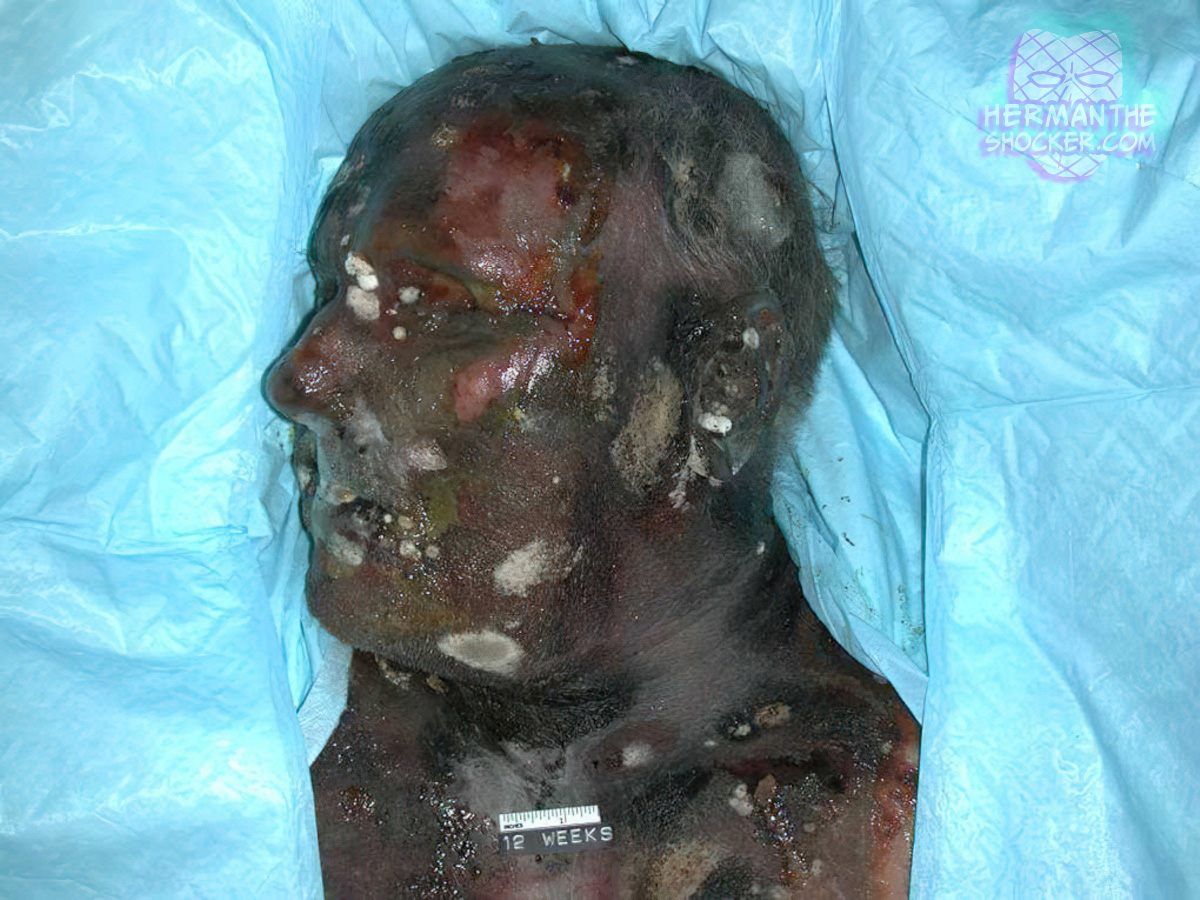Although putrefaction is a mainly anaerobic bacterial reduction process, decomposition is dominated by aerobic microbiological processes that may create pungent, rotten odours originating from the metabolic products of oxidation. Decomposition is a dry, acidic process on an oxidative basis, which leads to the splitting off of acids (carbonic acid, phosphoric acid, sulphuric acid). At the beginning of decomposition, large patches of fungus may form on the skin and mucous membranes.
Fungi may colonize the body in every possible location and at all times during the postmortem interval. However, the eyes are more often affected by fungal colonization under dry conditions and the mouth and nose are more often colonized with fungi in moist to wet environments. Fungi may mimic antemortem pouring of chemical substances over the body.
Fungi can form distinctive mildew spots, ultimately converting bodies into moldy cadavers at the dry stage of decomposition. Heavily decomposed cadavers, in particular those that are highly mummified, often present visible fungal growth. Artificial cultivation has allowed for the morphological identification of the fungi that tend to colonize cadavers.
Latest posts








